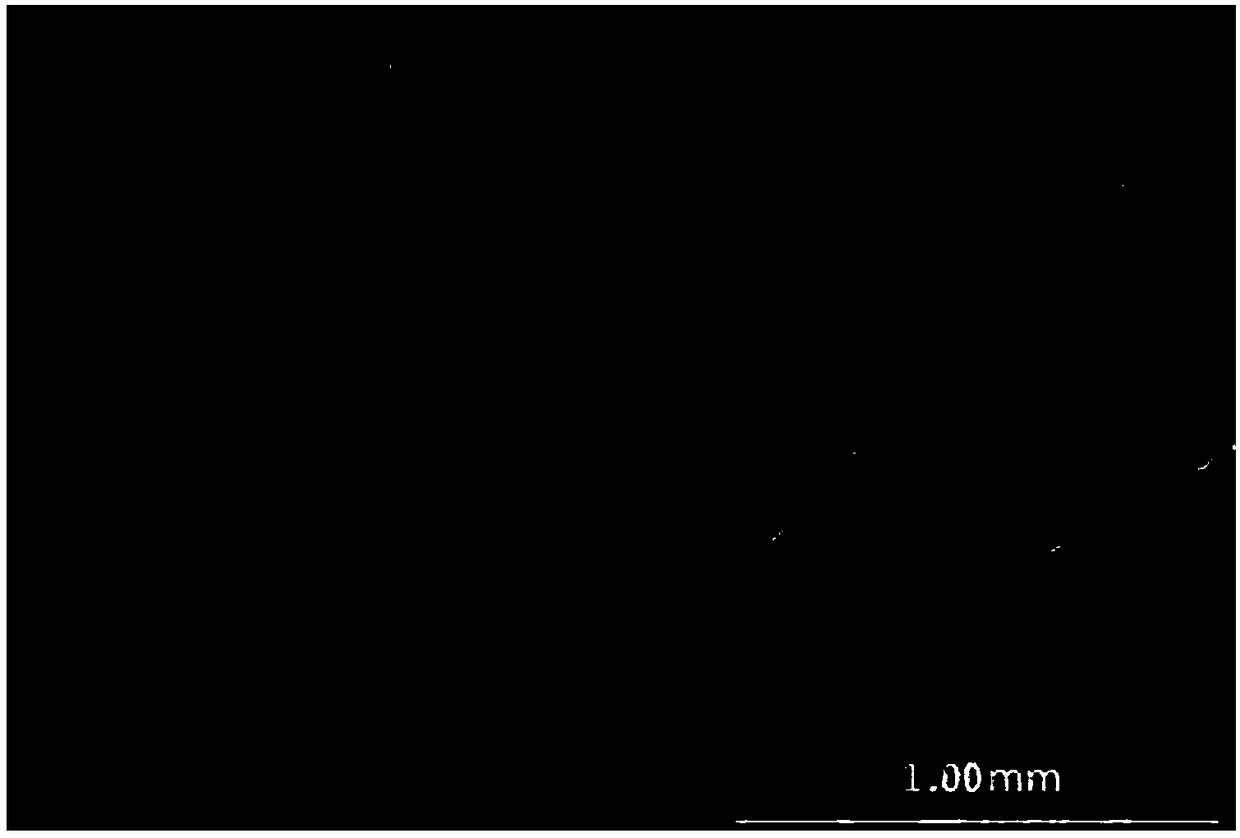Compressible graphene/conductive polymer composite electrode material and preparation method thereof
A conductive polymer and composite electrode technology, applied in the field of composite materials, can solve problems such as poor elasticity and small capacity, and achieve good supercapacitor performance, easy to obtain, and low price effects
- Summary
- Abstract
- Description
- Claims
- Application Information
AI Technical Summary
Problems solved by technology
Method used
Image
Examples
Embodiment 1
[0026] Select GO prepared by the Hummers method, first sonicate for 40 minutes, add ascorbic acid according to the mass ratio of GO and ascorbic acid at 1:2 after sonication, and stir for 5 minutes; then reduce at 95°C for 24 minutes to obtain RGO; then freeze for 4 hours, Then reduce at high temperature for 5 hours, dialyze with deionized water and dry. Prepare a mixed solution with a molar ratio of sulfuric acid and aniline monomer of 10:1, use the mixed solution as the electrolyte solution, platinum wire as the counter electrode, silver chloride as the reference electrode, and graphene as the working electrode to construct a three-electrode system, select the voltage range At -0.2V ~ 0.8V, cyclic voltammetry with a scan rate of 40mV / s scans 400 cycles, and then washes with deionized water several times and dries.
Embodiment 2
[0028] Select GO prepared by the Hummers method, first sonicate for 40 minutes, add ascorbic acid according to the mass ratio of GO and ascorbic acid at 1:2 after sonication, and stir for 5 minutes; then reduce at 95°C for 40 minutes to obtain RGO; then freeze for 4 hours, Then reduce at high temperature for 5 hours, dialyze with deionized water and dry. Prepare a mixed solution with a molar ratio of sulfuric acid and aniline monomer of 10:1, use the mixed solution as the electrolyte solution, platinum wire as the counter electrode, silver chloride as the reference electrode, and graphene as the working electrode to construct a three-electrode system, select the voltage range At -0.2V ~ 0.8V, cyclic voltammetry with a scan rate of 40mV / s scans 400 cycles, and then washes with deionized water several times and dries.
Embodiment 3
[0030]Select GO prepared by the Hummers method, first sonicate for 40 minutes, add ascorbic acid according to the mass ratio of GO and ascorbic acid at 1:2 after sonication, and stir for 10 minutes; then reduce at 80°C for 24 minutes to obtain RGO; then freeze for 4 hours, Then reduce at high temperature for 5 hours, dialyze with deionized water and dry. Prepare a mixed solution with a molar ratio of sulfuric acid and aniline monomer of 10:1, use the mixed solution as the electrolyte solution, platinum wire as the counter electrode, silver chloride as the reference electrode, and graphene as the working electrode to construct a three-electrode system, select the voltage range At -0.2V ~ 0.8V, cyclic voltammetry scans at a scan rate of 40mV / s for 500 cycles. After the end, it is washed several times with deionized water and dried.
PUM
| Property | Measurement | Unit |
|---|---|---|
| pore size | aaaaa | aaaaa |
| electrical conductivity | aaaaa | aaaaa |
| thickness | aaaaa | aaaaa |
Abstract
Description
Claims
Application Information
 Login to View More
Login to View More - R&D
- Intellectual Property
- Life Sciences
- Materials
- Tech Scout
- Unparalleled Data Quality
- Higher Quality Content
- 60% Fewer Hallucinations
Browse by: Latest US Patents, China's latest patents, Technical Efficacy Thesaurus, Application Domain, Technology Topic, Popular Technical Reports.
© 2025 PatSnap. All rights reserved.Legal|Privacy policy|Modern Slavery Act Transparency Statement|Sitemap|About US| Contact US: help@patsnap.com



